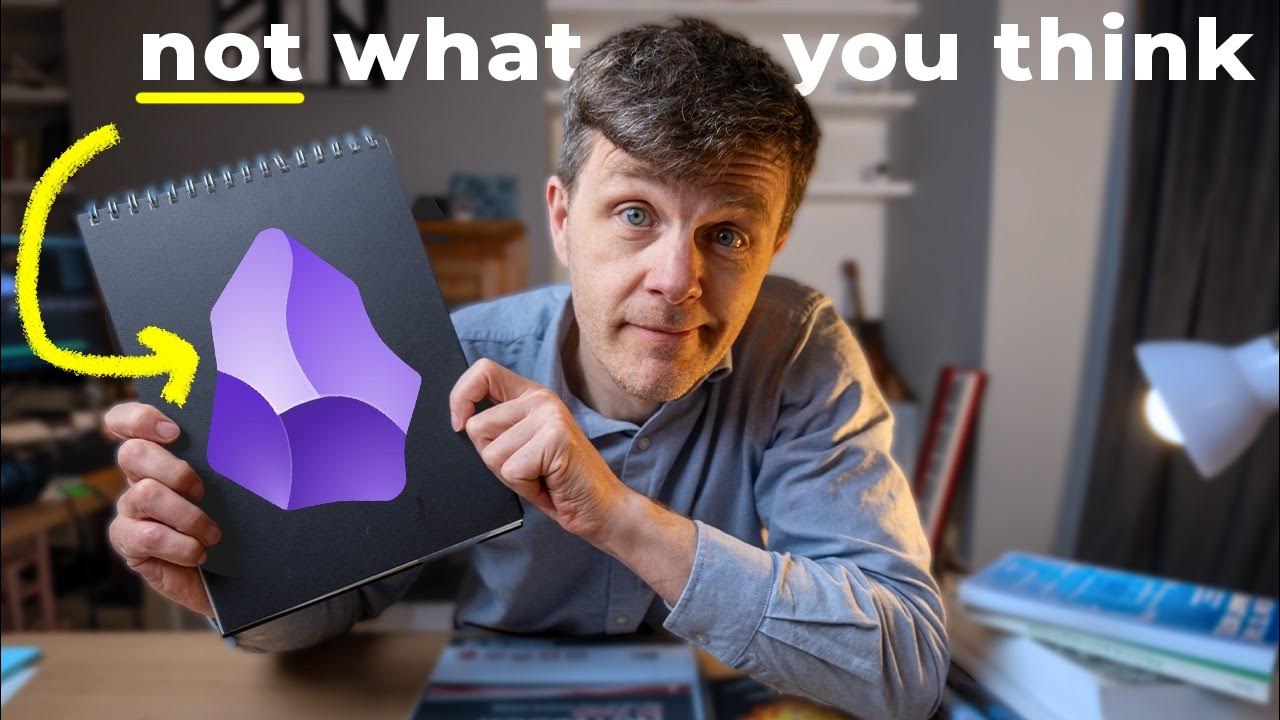How to set goals in Obsidian // Templates, Periodic Notes
Summary
TLDRThe speaker discusses their system for tracking New Year's resolutions using Obsidian, inspired by Marcus Olsson's method for OKRs. The system is organized into five levels: Core Principles, Yearly OKRs, Monthly Initiatives, Weekly Goals, and Daily Tasks. Each level is meticulously detailed, with the speaker emphasizing the importance of aligning all goals with their core principles. They utilize various Obsidian plugins for automation and organization, ensuring that their objectives remain manageable and consistently in focus. The speaker's approach is tailored to their personal needs and past experiences, aiming to improve the chances of successfully keeping resolutions.
Takeaways
- 🎯 Only 25% of people successfully keep their New Year's resolutions, often due to a lack of tracking system.
- 📚 The speaker uses Obsidian to track their goals, inspired by Marcus Olsson's blog post on tracking OKRs.
- 📈 The system is organized into five levels: Core Principles, Yearly OKRs, Monthly Initiatives, Weekly Goals, and Daily Tasks.
- 📝 Core Principles are guiding principles in life, constantly evolving and essential to personal identity.
- 📅 Yearly OKRs are tracked on a dedicated page in Obsidian, with a template for consistency and a limit of five objectives.
- 🔍 Key Results in OKRs should be clear and measurable, unlike vague resolutions like 'fluent in a language'.
- 📆 Monthly Initiatives are planned using the 'Periodic Notes' plugin, focusing on a few key actions to achieve OKRs.
- 📈 Weekly Goals are reviewed and planned using the 'Calendar' plugin, ensuring alignment with monthly initiatives.
- 📋 Daily Tasks are managed with the 'Daily Note' core plugin in Obsidian, keeping goals visible and actionable daily.
- 🔄 The system is automated and not overly complex, simplifying the process of tracking and achieving goals.
- 🔗 Everything is linked back to Core Principles, ensuring that all actions align with personal values and long-term objectives.
Q & A
What is the success rate of keeping New Year's resolutions?
-The success rate of keeping New Year's resolutions is 25%, meaning one in four people manage to keep them.
Why did the speaker fail to keep their resolutions in the past?
-The speaker failed to keep their resolutions because they didn't set up a system to track them.
What is Obsidian and how does the speaker use it?
-Obsidian is a note-taking and organization tool. The speaker uses it to track their goals and resolutions for 2022 in a structured manner.
What inspired the speaker to create their system in Obsidian?
-The speaker was inspired by a blog post written by Marcus Olsson, a colleague at Grafana, about tracking OKRs in Obsidian.
How many levels does the speaker's system have?
-The speaker's system has five different levels: Core Principles, Yearly OKRs, Monthly Initiatives, Weekly Goals, and Daily Tasks.
What are the Core Principles in the speaker's system?
-The Core Principles include Learning in public, Improvement, Essentialism, Honesty, Open-mindedness, Hard work, Creativity, and Kindness.
How does the speaker ensure their yearly OKRs are manageable?
-The speaker ensures their yearly OKRs are manageable by limiting them to five objectives, as having more than five can lead to forgetting what was intended to be done.
What is the difference between an OKR and a resolution according to the speaker?
-An OKR has a clear way to decide whether or not it has been met, unlike a resolution which may be vague and subjective.
How does the speaker use the 'Quick Add' plugin in Obsidian?
-The 'Quick Add' plugin allows the speaker to easily add an objective to their yearly OKRs page by using a hotkey and selecting from a list of templates.
What is the purpose of the 'Periodic Notes' plugin in the speaker's system?
-The 'Periodic Notes' plugin helps the speaker manage their monthly, weekly, and daily note templates, automating the creation of new notes in specified folders and formats.
How does the speaker ensure their daily tasks align with their goals and principles?
-The speaker uses the 'Daily Note' core plugin in Obsidian to create a note for every day, which includes embedded goals from their weekly review and a log for daily work, ensuring alignment with their objectives and principles.
Outlines

This section is available to paid users only. Please upgrade to access this part.
Upgrade NowMindmap

This section is available to paid users only. Please upgrade to access this part.
Upgrade NowKeywords

This section is available to paid users only. Please upgrade to access this part.
Upgrade NowHighlights

This section is available to paid users only. Please upgrade to access this part.
Upgrade NowTranscripts

This section is available to paid users only. Please upgrade to access this part.
Upgrade NowBrowse More Related Video
5.0 / 5 (0 votes)





